
News
Heliguy Delivers Drone Pilot Training To Network Rail
Heliguy delivered the drone training as part of a £2.6million framework agreement, as Network Rail looks to expand its number of drone operators. ... Read More
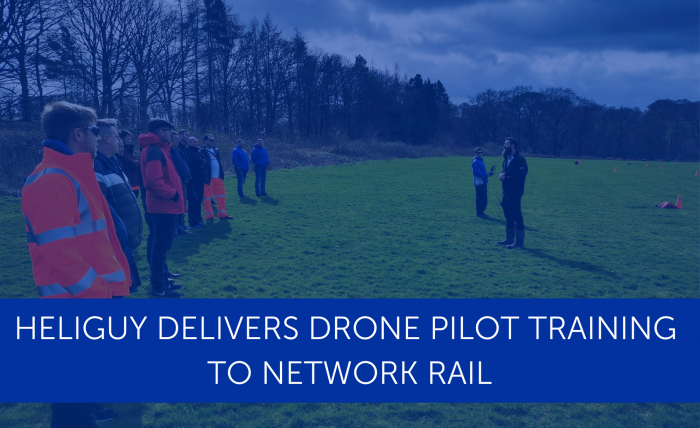
Heliguy delivers training to Network Rail as the organisation aims to expand its team of drone pilots;
Network Rail using DJI drones for infrastructure inspections and maintenance checks along its nationwide network – saving money, increasing efficiency and improving safety in the process;
Heliguy assisting Network Rail with drone supply, servicing and training after winning a place on £2.6million Unmanned Aircraft Services framework;
Network Rail praises Heliguy’s ‘well structured and well delivered’ training course, says Heliguy has delivered stock quickly, and is keen to utilise our R&D department.
Heliguy has delivered the first phase of specialist drone pilot training to Network Rail, as part of a £2.6million framework agreement.
The major infrastructure body wants to build a ‘strong team’ of skilled operators to bolster its UAS division.

Heliguy delivered drone training to Network Rail staff.
Network Rail is using its fleet of DJI drones – including the M200 Series and Mavic 2 models – to cover infrastructure inspections and maintenance checks along its nationwide network – driving down costs, improving safety and enhancing efficiency in the process.
Network Rail’s UAV programme is being supported by Heliguy, after the UK’s leading drone company won a place on a multi-million-pound nationwide contract involving supply, maintenance, servicing and training.
Under the terms of the framework, Heliguy has already supplied Network Rail with equipment, and recently our expert training team launched the first phase of upskilling staff to become drone operators.
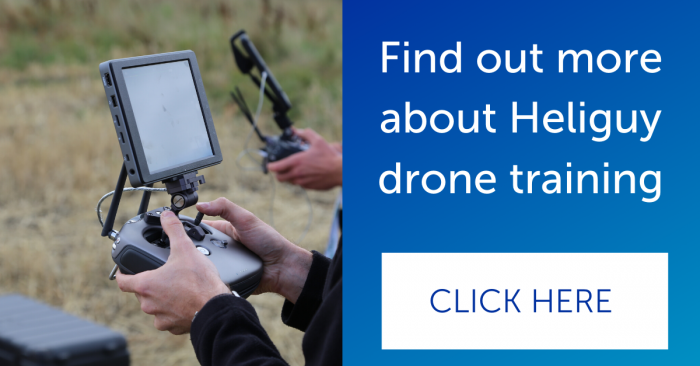
The one-day Network Rail Aptitude Testing – comprising basic lessons, an assessment and a practical hands-on session – was a prelude to Heliguy’s C-DOT (Commercial Drone Operators’ Training) course, and was designed to ensure that candidates had the right skills to sit the full training to become PfCO-qualified UAV pilots.
A total of 20 candidates came through the session, which was described as ‘very well structured and delivered’. Future training courses are planned as Network Rail ramps up its efforts to strengthen its UAS staffing team.
Paul Lindup, Network Rail’s Drone Manager, said: “Now we know what route we want to take with drones within Network Rail we need a strong but small team of well-trained drone pilots within the UK to call upon as part of their day job for the future.

The training course was described as 'very professional, very well structured and very well delivered.'
“A drone is a tool in their toolbox to keep them from the hazardous environment as much as possible.
“The Network Rail Aptitude Testing day with Heliguy was designed to make sure that the candidates are the best possible people to attend a full training course.
“They were assessed during the day to ensure they were fit to continue, and it was a way of making cost savings in case a candidate fails the course.
“We are looking at having enough candidates for four full C-DOT courses, so we may well have to run more pre-assessment days this year. I need well-rounded trained pilots at the end of the full course.”
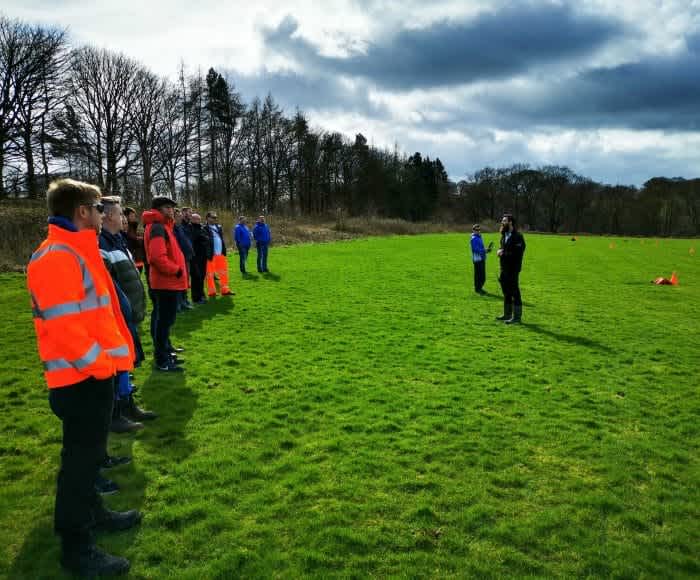
The Network Rail Aptitude Testing day was a prelude to the full training course for a PfCO.
Over the years, Heliguy has trained drone pilots for a range of major companies and organisations, such as Balfour Beatty, BBC Natural History Unit, Sellafield Sites, Manchester City FC, South Yorkshire Police, and Derbyshire Constabulary.
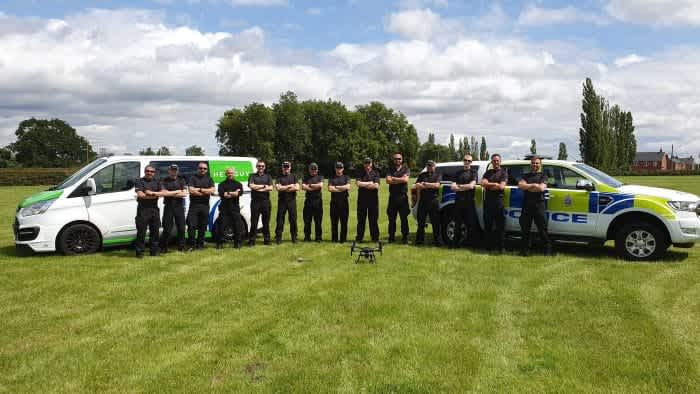
Heliguy has previously trained pilots from Derbyshire Police.
Paul has praised Heliguy’s training expertise. He said: “The course was very professional, very well structured and very well delivered. I know the instructors are great at what they do. For me, the most important part is the flying aspect, so I know the candidates are in safe hands.”
As well as utilising Heliguy’s training and drone supply service, Network Rail is keen to harness consultancy, bespoke builds and custom integrations from Heliguy’s R&D department – which most recently has unveiled a collision-proof cage for the DJI Mavic 2 Series
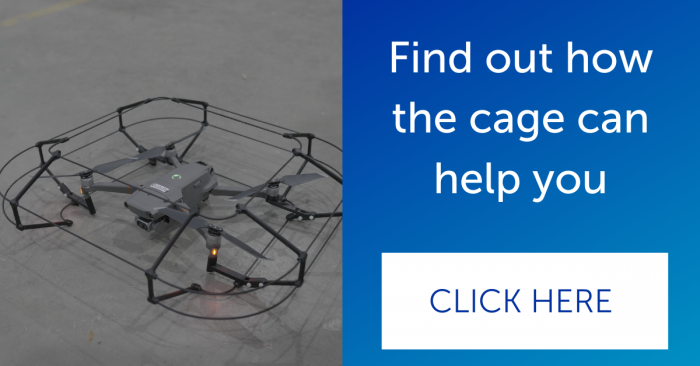
Paul said: “I have been working with Ross from R&D. This is a part of the business that I am keen to do more in. The progression of drones within the construction and transportation industry is key. R&D is one way of making sure that you stay at the leading edge of that.”
Network Rail Harnessing The Power Of Drones
Network Rail needs more drone pilots because UAVs are playing an increasingly important role in its operations.
UAS are used to survey the railway for regular maintenance or following an incident.
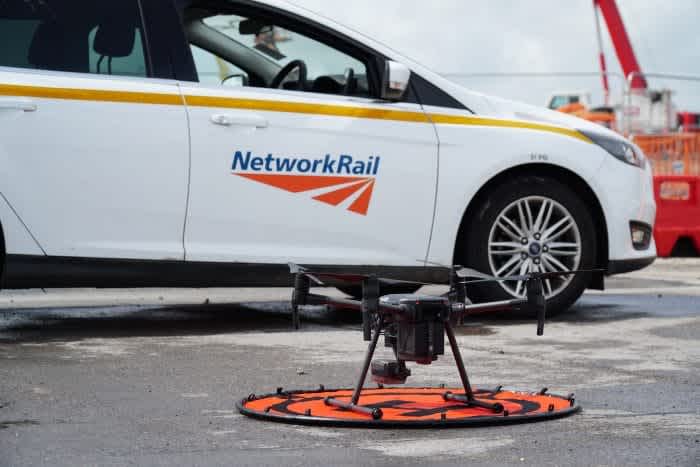
Network Rail is using a range of drones, including aircraft in the M200 Series.
They are a cost-effective solution for close-up inspections of difficult to access structures, such as building roofs, bridges, communication masts and overhead wires.
Carrying high-tech equipment – such as thermal sensors or zoom cameras – Network Rail’s drones gather data, videos and images of railway infrastructure so a problem can be better understood and repairs can be identified.
Inspections by air mean that the railway can stay open, improving service performance and reliability, and staff are kept safe, as engineers are not being sent onto tracks.
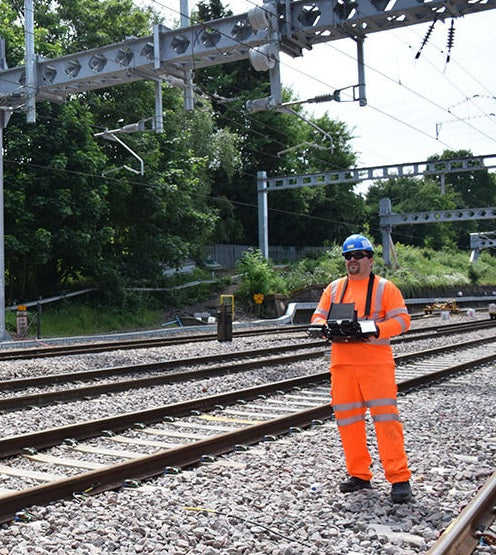
Drones are helping Network Rail improve safety.
Network Rail has more than 60 commercial off-the-shelf DJI drones – ranging from M200 Series with Z30/XT2 cameras, to Mavic 2 aircraft and Inspire models.
Paul said: “We use two forms of drones. A framework of four companies that carry out the professional projects that require data capture from the air.
“Then we have the in-house capability that carries out the responsive element and smaller projects due to the nature of most of the pilots being part-time pilots.”
Explaining some of the use cases for the drones, Paul added: “The Network Rail drones are used on a regular daily basis assessing incidents, inspecting assets with daylight RGB sensors and thermal sensors. We have a range, from the very basic Mavic up to the Matrice range to ensure we have the right tool for the right job.
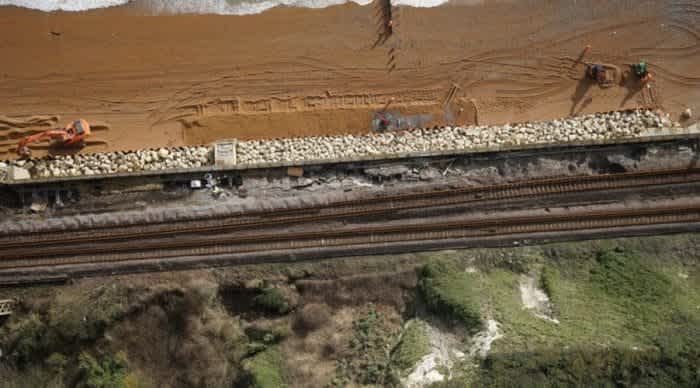
Drones provide useful overhead views.
“We have found faults with the DJI XT1 and XT2 sensors on our electrification systems. We have also used basic DJI Mavics and Inspire aircraft to assess damage to the track, and also flooding scenarios. The aerial data has allowed us planning processes to get the track open as quickly as possible, putting passengers first.”
Dones complement Network Rail’s manned aviation division, with UAS being deployed quicker, easier and cheaper than a helicopter.

A drone in the DJI M200 Series.
In one example, and as part of a project to improve the resilience of the railway between Exeter and Newton Abbot, Network Rail used a drone to survey the cliff face at Teignmouth, where the railway runs directly underneath.
The drone was launched and piloted from a Rigid Inflatable Boat (RIB), bobbing along the coastline. The drone enabled the team to gather close-up footage in a much quicker timescale than the traditional use of helicopters and people power would allow, was much safer and proved to be less intrusive for the local community.
Heliguy is a DJI Gold Partner and a European enterprise award-winner. To find out how Heliguy can start, support, or scale your commercial drone operations, contact us by phone or email. To find out more about drone training with Heliguy, click here.
